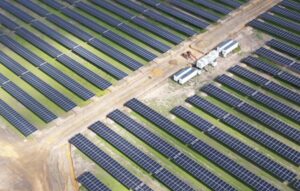(Note: An earlier version of this story was lost – along with the comments made by readers – because of our ongoing “technical difficulties”).
Last week, in response to a story about solar tariffs, one of our readers highlighted some of the ingenious ways installers are getting around the barriers imposed on distributed generation by many of incumbent utilities.
“Le Clair” described how he had installed a 5kW solar system on his household roof, and then, for just $99, added solar hot water – simply by diverting excess solar electricity during the day to the hot water element. Instead of getting paid 8c.kWh for exporting excess power back into the grid, Le Clair saved on paying 30c/kWh on his hot water. It cut his quarterly bills from $180 to $20.
 And it used equipment as cheap and simple as $10 programmable timer switches (one for the meter box to divert the flow of current from the grid to the element in the water heater, and the second to connect the inverter output to either the house load or the supply for the water heater circuit).
And it used equipment as cheap and simple as $10 programmable timer switches (one for the meter box to divert the flow of current from the grid to the element in the water heater, and the second to connect the inverter output to either the house load or the supply for the water heater circuit).
“Hey Presto, you are now storing energy that would otherwise have been stolen by the grid,” he wrote. (And, it should be noted, that you are saving around 15kWh that customers may otherwise have had to store, or take from the grid).
It’s a fascinating insight into the sort of guerilla tactics being adopted to work around the barriers being imposed by utilities on households that have or want solar. Barriers that include preventing solar PV connections, preventing exports back to the grid, or paying little or nothing for those exports.
Ingenuity, and there seems to be little that the utilities can do about it, who have been desperate to protect their revenues in an environment of falling demand and been largely allowed to get away with it by the regulatory settings.
As another RenewEconomy reader noted of the utility tactics:
“This is perfect example of unchecked capitalism, where a law allows a business charge the same amount to a declining customer base. We are already aware that those without solar are facing bigger bills (those with solar will still pay more for what the use from the grid, but it’s less than those without solar) . This kind of law has the potential to wreck the very business it hopes to protect. The irony of the situation is not lost on us. What we are seeing is self cannibalisation of a dirty business. Prices will get so out of hand that even the most reluctant person will be looking to install solar.”
Indeed, as an Ernst & Young survey found, 9 out of 10 Australian households have, are considering or will consider installing solar.
Glen Morris, an expert in small-scale renewables and storage with SolarQuip says Le Clair’s hot water solar work around, and the sort of programmable switches highlighted in our article last week, are just the tip of the iceberg of what some describe as the guerilla – or hot PV – installations happening across the country.
Solar PV, he notes, can be used to power stand alone appliances such as water heating, pool pumps, and lighting circuits – without ever needing to be connected to the grid.
Some network operators privately lament that they are unable to monitor the rollout of such installations, because they are not connected, and don’t require network approval (if they could get them).
Morris notes that these installations are being driven by the tariffs, which show little or no reward for solar exports, and network restrictions on solar modules.
“This technology is in its infancy – but there are products out there that do it. and early adopters are looking at these kind of products. We are on the slippery slope to grid defection,” Morris says, adding that some interesting innovations are occurring in battery storage as well.
“People just love solar – they are thinking about how can they can connect solar – and if they encounter opposition from networks, they find a way around.” That means finding more ways to “off-grid” parts of the home and part of home consumption.
“We are going through the massive revolution of energy networks. We will have multiple sources of energy, we will have “virtual net metering”, we will have energy distribution across various sites, and peer-to-peer trading. We are seeing the equivalent of the mobile phone revolution.
Note: If you have any similar stories, please let us know editor at renew economy.com.au










